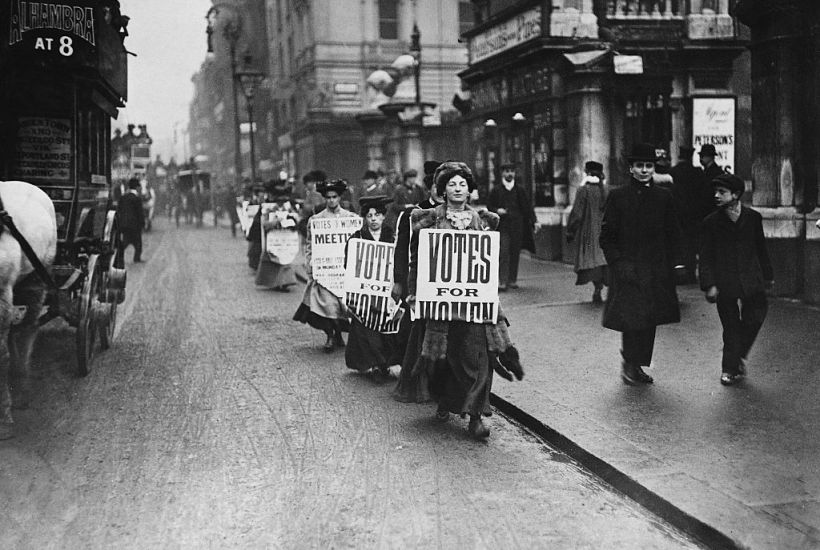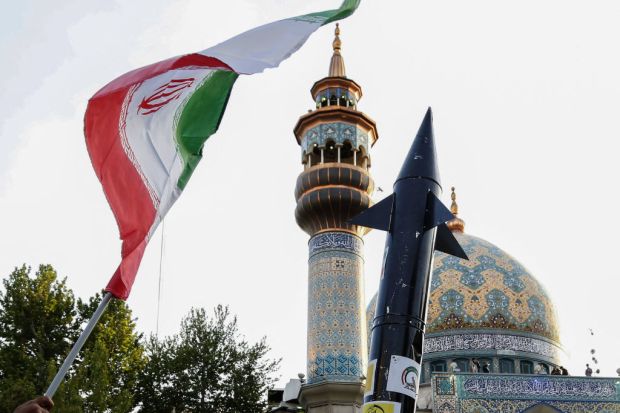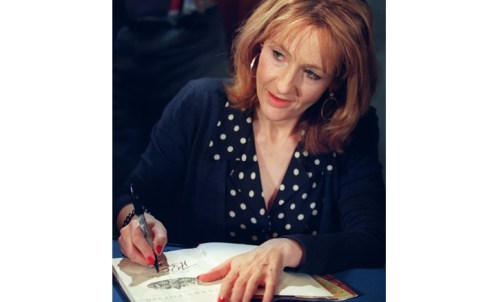I suppose most people regard the Suffragettes as the exemplary vindication of the right to carry out illegal direct action in a righteous cause. Speaking in support of Extinction Rebellion, Helen Pankhurst, a descendant of the Suffragette leader, said that both movements were equally ‘socially marginalised, made fun of, considered to be extremists, and legally silenced, and yet they stand up for justice in the way the Suffragettes did.’
Rather than pushing on a slowly opening door, they preferred to throw a brick through the window
The Suffragette campaign was the first deliberately violent English political campaign since the 1840s, and this is part of its myth. Thankfully no one was killed during its campaign, other than the unfortunate Emily Davison. However, the leading feminist Millicent Fawcett, leader of the law-abiding National Union of Women’s Suffrage Societies, called the Suffragettes ‘the most powerful allies the antisuffragists have.’ Did the Suffragettes really advance political rights for women? Is violent disruption the way to go? The answer, 105 years after votes for women were legislated, is not simple. And perhaps there are indeed some present-day parallels.
Women had long played a more prominent part in English public life than in most countries. Some seem even to have been able to vote until the Great Reform Act of 1832 specifically forbade it. Women had been active in the anti-slavery campaign from the 1790s, deeply involved in protests against state-regulated prostitution, and mobilised to protest against sexual enslavement of Christian women in the Balkans in the 1870s. Many were leaders of the temperance movement. Some were outspoken critics of British policy towards Boer women and children during the South African War. Middle-class women were increasingly involved in local government as Poor Law Guardians (more than 800), as professional and volunteer charity workers (perhaps 500,000), and as members of School Boards and as teachers (over 170,000 women taught in Elementary Schools). From 1907 they were voters and members of county and borough councils. Hundreds of thousands of women were volunteer Tory or Liberal party workers.
The final step of parliamentary suffrage was not universally opposed. As early as 1848, Benjamin Disraeli told the Commons that if a woman could be head of state, a landowner and a churchwarden, she could certainly exercise the vote. The late-Victorian prime minister Lord Salisbury, the antithesis of a progressive, regarded it as logical that educated and property-owning women should vote. But it was still a daring idea. By 1900 only in a few small countries and provinces did women have full voting rights—New Zealand (1893), South Australia (1895) and a few US states, such as Wyoming. During the 1890s, a majority of Conservative and Liberal MPs came to support some degree of women’s suffrage. Trade unionists and socialists were divided. Some opposed the vote going to middle-class women while many working-class men remained unenfranchised, especially as women were expected to vote Tory.
Still, in 1904, in reply to a petition from 66,000 women mainly in the Lancashire cotton industry, the House of Commons passed a pro-suffrage motion by 184 votes to 70. The practical obstacle was the Liberal government, which controlled the parliamentary timetable, and had other things than women’s suffrage on their minds – principally a battle with the Lords, their shaky majority, and a growing crisis in Ireland.
Some women refused to wait patiently on male politicians. Rather than pushing on a slowly opening door, they preferred to throw a brick through the window. In 1903 Emmeline Pankhurst founded the mainly middle-class Women’s Social and Political Union, and set out to embarrass the government by public acts of defiance (in January 1908 two women chained themselves to the railings outside 10 Downing Street), and by petty but sensational acts of violence. Some working-class feminists refused to be ‘mixed up with … educated and upper class women who kick, shriek, bite and spit.’
The Suffragettes were ready, even eager, to suffer for the cause: they seem to have been the inventors of the hunger strike, and were often roughly treated by policemen and members of the public. In short, the Suffragettes raised the profile of the suffrage issue, but made its opponents more intransigent, and sometimes more brutal. In 1909 the Liberal Home Secretary, Herbert Gladstone authorised force feeding of hunger strikers, causing widespread repugnance. A private member’s bill giving women the parliamentary vote was backed by 299 to 189, but then parliament was dissolved amid a crisis over the budget. Two similar bills failed in 1911-12, as did a compromise ‘Conciliation Bill’ offered by the government.
These failures were due to a hostile reaction against Suffragette violence, to opposition from Irish nationalists, and to reluctance to enact a measure which, said the Chancellor David Lloyd George, would add ‘hundreds of thousands of votes … to the strength of the Tory party.’ The Suffragettes again went on the rampage, smashing the Orchid House at Kew, bombing Lloyd George’s house and setting various buildings on fire. Another Private Member’s Bill was defeated. The voluptuous bottom of Velasquez’s Rokeby Venus was slashed – perhaps inspiring the young woman who recently threw soup over a van Gogh. Attempts were made by male sympathisers to horsewhip Liberal MPs. Fortunately, no one was killed. But in 1913 Emily Davison, for no clear reason, walked on to the Epsom race-course during the Derby and was fatally trampled by the King’s horse.
The Suffragettes’ campaign seemed to have failed. Their membership collapsed. Were they indeed the most powerful allies the antisuffragists had? In some ways they were, though paradoxically they had given moderate feminists a new determination and a rising membership, and won them the support of many politicians and even the TUC. It was clear that women’s suffrage was not far off; but whether the Suffragettes hastened it or delayed it is a matter of speculation, as war suspended normal politics.
Suffragette prisoners were released, and most devoted themselves energetically to the war effort, including handing out white feathers to men in civilian clothes and adopting the slogan ‘For King, for Country, for Freedom.’ Mrs Pankhurst declared that ‘Prussianism’ was ‘masculinity carried to the point of obscenity.’ The war swept away parliamentary obstacles and altered the public mood. Was this the Suffragettes’ triumph? The fact is that when peace returned English women over 30 got the vote at the same time as those in Austria, Czechoslovakia, Sweden, Poland, Germany, Holland and Luxembourg. Mrs Pankhurst stood for parliament as a Tory. A statue to her was unveiled by Stanley Baldwin, the Conservative prime minister under whose government in 1928 women achieved the vote on the same terms as men. And most did vote Conservative.
Got something to add? Join the discussion and comment below.
Get 10 issues for just $10
Subscribe to The Spectator Australia today for the next 10 magazine issues, plus full online access, for just $10.



















Comments
Don't miss out
Join the conversation with other Spectator Australia readers. Subscribe to leave a comment.
SUBSCRIBEAlready a subscriber? Log in